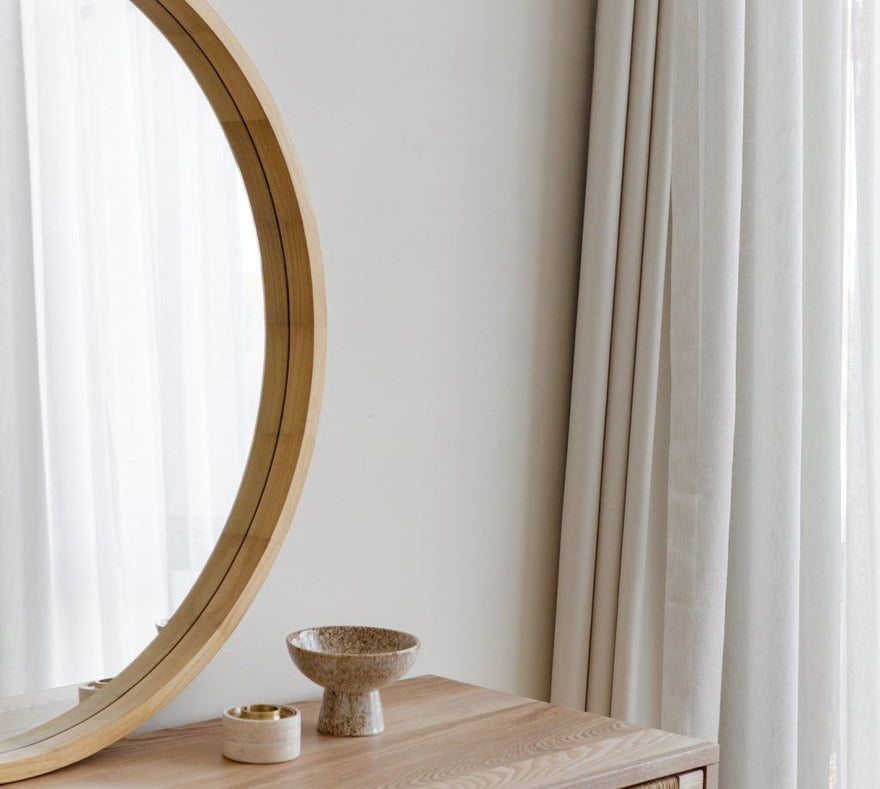curtains
Smart ways to cover a sliding door with curtains or blinds

With such a great range of blinds and curtains available, it can be difficult weighing up the pros and cons of the different features. If, for example, you’re fitting blinds over a sliding glass door in a bathroom, you'll need to consider moisture, privacy and ventilation. For a bedroom or living area, it's likely that light and temperature control (plus a relaxing vibe!) should be at the forefront of your thoughts.
When choosing window coverings for your sliding doors, keep accessibility top of mind; ask yourself, how often do you use the door? Will the blinds or curtains be mainly decorative, or do they need to block or adjust sunlight throughout the day? These factors should guide your decision when picking window furnishings. Keep reading to explore a few smart ways to cover a sliding door with blinds or curtains.
What to consider when selecting blinds or curtains for a sliding door
Are your sliding doors in constant use?
If your sliding door is used regularly, with people frequently entering or leaving via a patio or alfresco area, an elegant set of double curtains offer a pleasingly practical solution. Sheer curtains can be partially drawn out of the way while still adding softness to the space, and if needed, pulling them across will instantly provide daytime privacy. Blockout curtains can also be pulled back and then drawn closed at night, ensuring complete privacy while still allowing access.
Are they exposed to the elements?
If your sliding doors lead directly to an area where natural elements could easily be transferred into the home, then it pays to be mindful of the wear and tear the curtains could experience. While most curtain fabrics can be spot cleaned and many can be washed, constantly removing dirt or marks will become a pretty tiresome task over a period of time.
A great solution are the Aussie classic vertical blinds. These provide exceptional light and privacy control, day or night, while being super easy to draw out of the way when door access is required. Just be sure to choose a stacking side that will have the least impact on daily door use, ideally one that draws the panels away from the door completely.
What about less trafficked doors?
If your door is more like a window and rarely used as an access point, then the choice is really all yours!
Sheer curtains, Venetian blinds or roller blinds can all work well, however, roller blinds are a particularly good option to help filter the exact amount of sunlight you want to let into the room thanks to the available sunscreen or light-filtering fabric options. They are also really convenient for sliding glass doors, where it can be difficult to block out some of the sun's rays when it's higher in the sky.
Roller blinds can also be quickly rolled up by hand (or motor) whenever access through the door is required. We typically advise choosing a face fit and forward roll for sliding door rollers as this will ensure the fabric clears any handles or other elements that may protrude inwards from the glass or surrounding frame.
What if they are mainly decorative window coverings?
If you’re looking for window coverings that are mainly decorative, look for something that adds to the style and serves a purpose. For example, textured linen-blend sheers or blockout curtains in bold colours can be a focal point in your room. Do make sure they match the room’s overall style, so they complement your décor.
Discover window coverings for your sliding doors
Need some extra advice or more inspiration? Contact us and we'd be happy to help. Shop online with Curtain & Blind Co. now to discover our complete range of window furnishings for your sliding doors.


